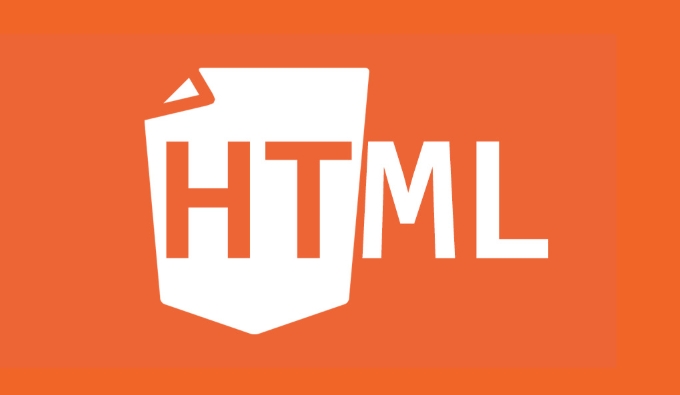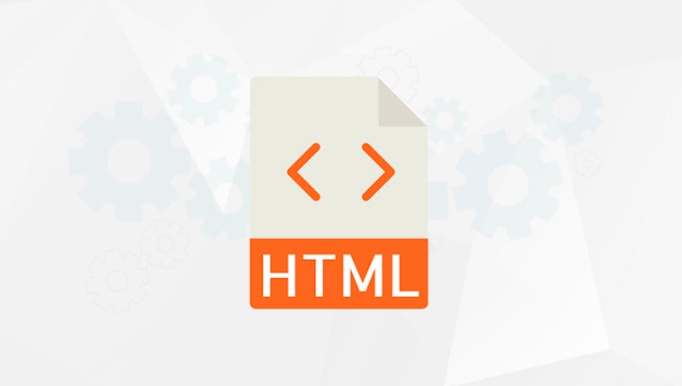What is the correct way to include JavaScript in html files?
Jul 04, 2025 am 12:14 AMWhen introducing JavaScript correctly, you need to pay attention to the loading method and location. 1. When using the <script> tag to introduce external JS files, it should be placed before the <body> end tag or in <head> with the defer/async attribute. 2. A small amount of code can be directly embedded in the HTML <script> tag but is not recommended for large projects. 3.defer makes the script load asynchronously and execute async in order, then loads asynchronously and executes immediately suitable for independent scripts. 4 Pay attention to the application of path correctness, end tag integrity, dependency order and type="module" to ensure compatibility and correct loading. </script>

The way to properly introduce JavaScript into HTML files is actually not complicated, but there are several key points to pay attention to to ensure that the script can be loaded and executed smoothly. From the perspective of actual use, we will divide several common scenarios to explain how to correctly add JavaScript to HTML files.

1. Use the <script></script> tag to import external JS files
The most common way is to introduce an external .js file through the <script></script> tag. This method is suitable for scenarios where there is a large amount of code and requires reuse or maintenance.

<script src="main.js"></script>
A few suggestions:
- Put
<script>before the<body>end tag, so as to avoid blocking page rendering. - If you have to put the script in
<head>, consider addingdeferorasyncattributes to prevent blocking HTML parsing. - Make sure the path is correct, and be careful whether the relative and absolute paths are spelled incorrectly.
2. Embed JS code directly in HTML
If you only need a small number of scripts (such as page initialization operations), you can write them directly inside the <script> tag:

<script>
document.addEventListener("DOMContentLoaded", function () {
console.log("Page loading completed");
});
</script>Notes:
- This method is suitable for simple logic and is not recommended for large projects, which is not conducive to maintenance and caching.
- It is also recommended to place it at the bottom of
<body>, or usedeferto control the execution timing.
3. Use defer and async to control loading behavior
These two properties can significantly affect the loading and execution order of scripts, especially for performance optimization.
<script src="main.js" defer></script> <script src="analytics.js" async></script>
Distinguishing description:
-
defer: The script will be loaded asynchronously and executed in order after the HTML parsing is completed. -
async: The script is loaded asynchronously and executed immediately, with uncertain execution order, suitable for independent scripts such as statistical code.
4. Pay attention to browser compatibility and loading order
Although modern browsers generally support the standard <script> tag, it is still important to note:
- Do not miss the end tag
</script>, otherwise it may lead to parsing errors. - If there is a dependency between multiple scripts, it is best to use
deferand keep the order correct. - For modular scripts (such as ES Modules), you can use
type="module"which hasdeferbehavior by default.
<script type="module" src="app.js"></script>
Basically that's it. The key to correctly introducing JavaScript is to understand the script loading mechanism and choose the appropriate method according to your needs. It seems simple, but if you are not careful, you may cause problems such as white screen and failure of functions.
The above is the detailed content of What is the correct way to include JavaScript in html files?. For more information, please follow other related articles on the PHP Chinese website!

Hot AI Tools

Undress AI Tool
Undress images for free

Undresser.AI Undress
AI-powered app for creating realistic nude photos

AI Clothes Remover
Online AI tool for removing clothes from photos.

Clothoff.io
AI clothes remover

Video Face Swap
Swap faces in any video effortlessly with our completely free AI face swap tool!

Hot Article

Hot Tools

Notepad++7.3.1
Easy-to-use and free code editor

SublimeText3 Chinese version
Chinese version, very easy to use

Zend Studio 13.0.1
Powerful PHP integrated development environment

Dreamweaver CS6
Visual web development tools

SublimeText3 Mac version
God-level code editing software (SublimeText3)

Hot Topics
 How do I minimize the size of HTML files?
Jun 24, 2025 am 12:53 AM
How do I minimize the size of HTML files?
Jun 24, 2025 am 12:53 AM
To reduce the size of HTML files, you need to clean up redundant code, compress content, and optimize structure. 1. Delete unused tags, comments and extra blanks to reduce volume; 2. Move inline CSS and JavaScript to external files and merge multiple scripts or style blocks; 3. Simplify label syntax without affecting parsing, such as omitting optional closed tags or using short attributes; 4. After cleaning, enable server-side compression technologies such as Gzip or Brotli to further reduce the transmission volume. These steps can significantly improve page loading performance without sacrificing functionality.
 How do I use the element to represent the footer of a document or section?
Jun 25, 2025 am 12:57 AM
How do I use the element to represent the footer of a document or section?
Jun 25, 2025 am 12:57 AM
It is a semantic tag used in HTML5 to define the bottom of the page or content block, usually including copyright information, contact information or navigation links; it can be placed at the bottom of the page or nested in, etc. tags as the end of the block; when using it, you should pay attention to avoid repeated abuse and irrelevant content.
 How has HTML evolved over time, and what are the key milestones in its history?
Jun 24, 2025 am 12:54 AM
How has HTML evolved over time, and what are the key milestones in its history?
Jun 24, 2025 am 12:54 AM
HTMLhasevolvedsignificantlysinceitscreationtomeetthegrowingdemandsofwebdevelopersandusers.Initiallyasimplemarkuplanguageforsharingdocuments,ithasundergonemajorupdates,includingHTML2.0,whichintroducedforms;HTML3.x,whichaddedvisualenhancementsandlayout
 How do I use the tabindex attribute to control the tab order of elements?
Jun 24, 2025 am 12:56 AM
How do I use the tabindex attribute to control the tab order of elements?
Jun 24, 2025 am 12:56 AM
ThetabindexattributecontrolshowelementsreceivefocusviatheTabkey,withthreemainvalues:tabindex="0"addsanelementtothenaturaltaborder,tabindex="-1"allowsprogrammaticfocusonly,andtabindex="n"(positivenumber)setsacustomtabbing
 What is the declaration, and what does it do?
Jun 24, 2025 am 12:57 AM
What is the declaration, and what does it do?
Jun 24, 2025 am 12:57 AM
Adeclarationisaformalstatementthatsomethingistrue,official,orrequired,usedtoclearlydefineorannounceanintent,fact,orrule.Itplaysakeyroleinprogrammingbydefiningvariablesandfunctions,inlegalcontextsbyreportingfactsunderoath,andindailylifebymakingintenti
 How do I use the and elements to provide a caption for an image?
Jun 24, 2025 am 12:45 AM
How do I use the and elements to provide a caption for an image?
Jun 24, 2025 am 12:45 AM
The standard way to add titles to images in HTML is to use and elements. 1. The basic usage is to wrap the image in the tag and add a title inside it, for example: this is the title of the image; 2. The reasons for using these two tags include clear semantics, convenient style control, and strong accessibility, which helps the browser, crawler and screen readers to understand the content structure; 3. Notes include that it can be placed up and down but needs to maintain logical order, cannot replace the alt attribute, and can contain multiple media elements to form a whole unit.
 What is the loading='lazy' one of the html attributes and how does it improve page performance?
Jul 01, 2025 am 01:33 AM
What is the loading='lazy' one of the html attributes and how does it improve page performance?
Jul 01, 2025 am 01:33 AM
loading="lazy" is an HTML attribute for and which enables the browser's native lazy loading function to improve page performance. 1. It delays loading non-first-screen resources, reduces initial loading time, saves bandwidth and server requests; 2. It is suitable for large amounts of pictures or embedded content in long pages; 3. It is not suitable for first-screen images, small icons, or lazy loading using JavaScript; 4. It is necessary to cooperate with optimization measures such as setting sizes and compressing files to avoid layout offsets and ensure compatibility. When using it, you should test the scrolling experience and weigh the user experience.
 How do I use the element to represent a section of navigation links?
Jun 24, 2025 am 12:55 AM
How do I use the element to represent a section of navigation links?
Jun 24, 2025 am 12:55 AM
The key to using elements to represent navigation link areas is semantics and clear structure, usually in conjunction with organizational links. 1. The basic structure is to put the parallel links in and wrap them inside, which is friendly to auxiliary tools and is conducive to style control and SEO; 2. Commonly used in or, for placing main navigation or footer link collections; 3. A page can contain multiple areas, such as main menu, sidebar or footer independent navigation.






